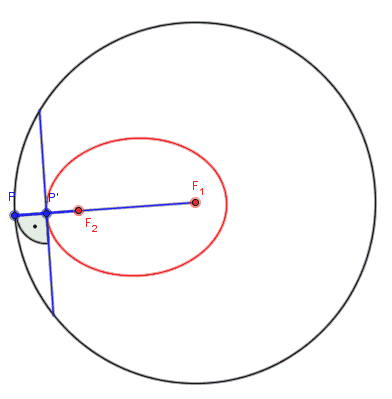Feynman's Lost Lecture on:
[Wikipedia]
[Google]
[Amazon]
''Feynman's Lost Lecture: The Motion of Planets Around the Sun'' is a book based on a lecture by Richard Feynman. Restoration of the lecture notes and conversion into book form was undertaken by

Caltech
The California Institute of Technology (branded as Caltech or CIT)The university itself only spells its short form as "Caltech"; the institution considers other spellings such a"Cal Tech" and "CalTech" incorrect. The institute is also occasional ...
physicist David L. Goodstein
David Louis Goodstein (born April 5, 1939) is an American physicist and educator. From 1988 to 2007 he served as Vice- provost of the California Institute of Technology (Caltech), where he is also a professor of physics and applied physics, as w ...
and archivist Judith R. Goodstein
Judith Ronnie Goodstein (née Koral, born 1939) is an American historian of science, historian of mathematics, archivist, and book author. She worked for many years at the California Institute of Technology (Caltech), where she is University Archi ...
.
Feynman had given the lecture on the motion of bodies at Caltech on March 13, 1964, but the notes and pictures were lost for a number of years and consequently not included in ''The Feynman Lectures on Physics
''The Feynman Lectures on Physics'' is a physics textbook based on some lectures by Richard Feynman, a Nobel laureate who has sometimes been called "The Great Explainer". The lectures were presented before undergraduate students at the Californ ...
'' series. The lecture notes were later found, but unfortunately without the photographs of his illustrative chalkboard
A blackboard (also known as a chalkboard) is a reusable writing surface on which text or drawings are made with sticks of calcium sulphate or calcium carbonate, known, when used for this purpose, as chalk. Blackboards were originally made of ...
drawings. One of the editors, David L. Goodstein, stated that at first without the photographs, it was very hard to figure out what diagrams he was referring to in the audiotapes, but a later finding of his own private lecture notes made it possible to understand completely the logical framework with which Feynman delivered the lecture.
Overview

''You can explain to people who don't know much of the physics, the early history... how Newton discovered... Kepler's Laws, and equal areas, and that means it's toward the sun, and all this stuff. And then the key - they always ask then, "Well, how do you see that it's an ellipse if it's the inverse square?" Well, it's God damned hard, there's no question of that. But I tried to find the simplest one I could.''In a non-course lecture delivered to a freshman physics audience, Feynman undertakes to present an elementary, geometric demonstration of
Newton
Newton most commonly refers to:
* Isaac Newton (1642–1726/1727), English scientist
* Newton (unit), SI unit of force named after Isaac Newton
Newton may also refer to:
Arts and entertainment
* ''Newton'' (film), a 2017 Indian film
* Newton ( ...
's discovery of the fact that Kepler
Johannes Kepler (; ; 27 December 1571 – 15 November 1630) was a German astronomer, mathematician, astrologer, natural philosopher and writer on music. He is a key figure in the 17th-century Scientific Revolution, best known for his laws o ...
's first observation, that the planets travel in elliptical orbits, is a necessary consequence of Kepler's other two observations.
The structure of Feynman's lecture:
* A historical introduction to the material
* An overview of some geometric properties of an ellipse
* Newton's demonstration that equal areas in equal times is equivalent to forces toward the sun
* Feynman's demonstration that equal changes in velocity occur in equal angles in the orbit
* Feynman's demonstration, using techniques of Ugo Fano
Ugo Fano (July 28, 1912 – February 13, 2001) was an Italian American physicist, notable for contributions to theoretical physics.
Biography
Ugo Fano was born into a wealthy Jewish family in Turin, Italy. His father was Gino Fano, a professo ...
, that these velocity changes imply that the orbit is elliptical
* Discussion of Rutherford's experiments with scattering of alpha particle
Alpha particles, also called alpha rays or alpha radiation, consist of two protons and two neutrons bound together into a particle identical to a helium-4 nucleus. They are generally produced in the process of alpha decay, but may also be produce ...
s, and the discovery of the atomic nucleus
The atomic nucleus is the small, dense region consisting of protons and neutrons at the center of an atom, discovered in 1911 by Ernest Rutherford based on the 1909 Geiger–Marsden gold foil experiment. After the discovery of the neutron i ...
The audio recording of the lectures also includes twenty minutes of informal Q&A at the blackboard with students who had attended the lecture.
See also
*Isaac Newton
Sir Isaac Newton (25 December 1642 – 20 March 1726/27) was an English mathematician, physicist, astronomer, alchemist, theologian, and author (described in his time as a "natural philosopher"), widely recognised as one of the grea ...
's work: ''Philosophiae Naturalis Principia Mathematica
Philosophy (from , ) is the systematized study of general and fundamental questions, such as those about existence, reason, knowledge, values, mind, and language. Such questions are often posed as problems to be studied or resolved. Some ...
''
References
1996 non-fiction books Physics books Astronomy books Works by Richard Feynman Books of lectures American non-fiction books W. W. Norton & Company books {{physics-book-stub